Effective Strategies for Oil Spill Response and Mitigation
One environmental hazard which is heavily associated with the extraction, transportation, and use of petroleum products is oil spills. The adverse impact of oil spills ranges from offshore and on land. Devastation on the local communities, wildlife and impacts on the marine ecosystems is heavily documented. For this reason, effective oil spill response and mitigation strategies are therefore needed to minimize environmental damage and ensure rapid recovery.
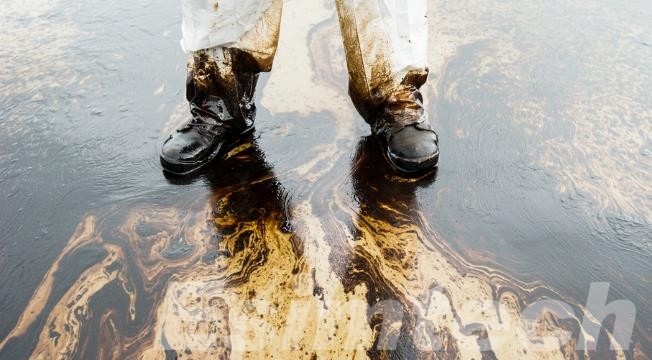
Understanding Oil Spills
An oil spill is defined as the accidental uncapping of crude oil and petroleum products, usually in excess of sea oil. Spills can happen through a variety of ways including broken pipelines, accidents with tankers, and failures in the drilling and/or other operating systems. The oil type, the volume of oil released, environmental conditions and the response time are parameters that will determine the severity of the impact.
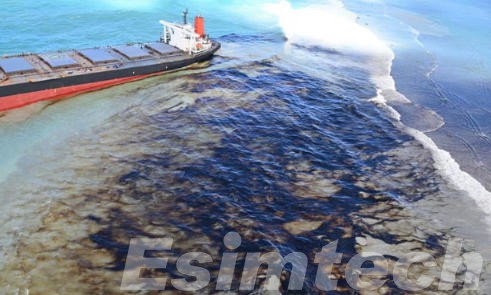
Immediate Measures for Oil Spill Response
The sudden release of oil in a marine or land environments demands rapid and decisive action to contain the spread of the spill, which is critical to controlling the spill. Determining oil spill response activities in the first few crucial hours of a spill is vital to a successful clean up and to mitigate deterioration of the environment.
1. Rapid Assessment and Situation Analysis
Each oil spill response begins by assessing the extent and nature of an incident. The responders determine the type of oil that was spilled, the amount released, where it was released, and the situational geography of the spilled oil, including wind, currents, and tides. This helps determine the possible response. Most often, the visual approach, where the spill and possible trajectories are predicted, gives the most helpful information. The first couple of hours of a spill are the most critical. This is when the most critical information is gathered, and it helps determine the most appropriate actions, including resource allocation.
2. Immediate Containment of the Spill
The most critical task of the first responders to an oil spill is containment. The spillage oil is supposed to be contained to a manageably sized area to eliminate further spreading of the oil. Booms, which are barrier-like objects or equipment, are deployed to encircle the spill to lessen its movement and protect vulnerable shorelines or habitats. Booms are physical barriers that assist in concentrating oil so that it can be recovered later. In some situations, natural barriers like coastlines can be strategically manipulated to capture the spilled oil. Unlike busy barriers which, the natural ones are most accurately predictable. Prompt and efficient deployment of containment tools markedly lessens the extent of contamination.
3. Mechanical Recovery Using Skimmers
After oil containment, the next step will be the mechanical recovery. To collect the concentrated oil from within the boom area, surface oil skimmers are deployed. Recovered oil is transported to temporary storage tanks or barges prior to disposal or recycling. Skimmers operate more efficiently in calm weather conditions and provide more effective recovery when the oil layer is thick. To provide rapid response in emergencies, the equipment should be subjected to regular maintenance and skimming equipment readiness drills.
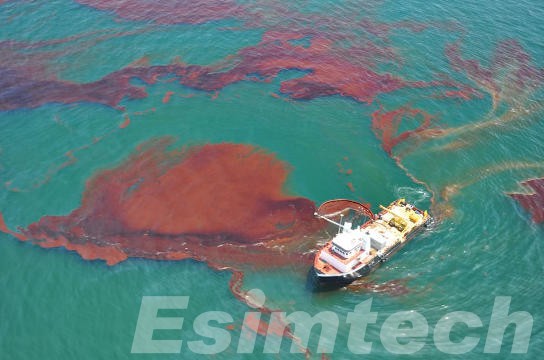
4. Application of Sorbents
In the early stages of cleanup, especially on small-scale or nearshore spills, sorbent materials are critical. Sorbents, whether natural (peat moss or straw) or synthetic (polypropylene pads), are designed to absorb or adsorb oil from the water, and on solid surfaces. Sorbents are easily deployed, are biodegradable and extremely useful in hard-to-reach sorbent areas. However, every sorbent should be disposed of to avoid secondary pollution after reaching their absorption limits.
5. Use of Chemical Dispersants
For larger offshore spills, when mechanical systems are less successful, chemical dispersants are an option. These agents divide the oil into tiny droplets so it can mix with water, facilitating natural biodegradation. Dispersants effectively mitigate superficial oil concentrations, but their potential toxicity to marine biota requires careful consideration. The decision to use dispersants is usually made by governmental environmental organizations, based on the specific circumstances of the spill and the prevailing conditions in the area.
6. Protection of Sensitive Areas
In the early stages of a spill response, one of the principal objectives is to shelter sensitive sites of an ecological or economic nature. Sensitive sites include coral reefs, mangroves, fisheries, and coastal wetlands, and these are prevented from becoming polluted with the use of booms, barriers, or diversion methods. Sometimes, protection zones are identified in advance and activated as part of regional or national contingency arrangements. This enables immediate protection of important ecosystems by response teams.
7. Coordination and Communication
Communication among response teams, local authorities, and the affected communities facilitates coordination of actions and efficient resource allocation. This can include establishing an emergency command center, which facilitates uninterrupted decision-making and operation response surveillance. Duplication of efforts is avoided and the safety of response personnel during the cleanup is ensured through the coordination of activities.
8. Initial Environmental Monitoring
Environmental monitoring during the initial phases of recovery and containment operations simultaneously begins. Baseline contamination levels are established by collecting water and sediment samples. This information is essential for assessing the response effectiveness and planning long-term remediation activities. Oil monitoring ensures the spread of oil is contained, and response tactics adequately addresses oil containment.
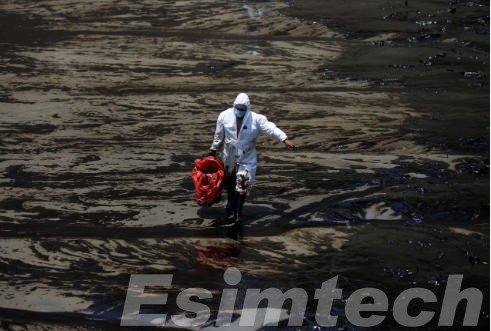
Mitigation and Recovery Techniques for Oil Spills
Effective mitigation and recovery techniques for oil spills entail containment and removal of the spilled oil. This is necessary for limiting, if not eliminating, the long-term impact on the environment and restoring the affected area. To promote the restoration of impacted ecosystems to their natural equilibrium as quickly as possible, a combination of biological, chemical, and physical techniques, as well as new technologies, can be employed.
1. Bioremediation
Among the several methods to deal with oil spills, the use of microorganisms (bacteria, fungi, etc.) to remove and mitigate the harmful effects of oil spills is one of the most environmentally friendly and sustainable methods. Microorganisms biodegrade oil and transform it into harmless end products like CO2 and water. Bioremediation techniques can enhance the microorganisms’ oil-degrading abilities by either increasing the concentration of the oil-degrading microbes (bioaugmentation) or adding nutrients and oxygen to encourage the growth of the microbes (biostimulation). Bioremediation can be performed in situ or ex situ. The level of biodegradation is determined by the availability of temperature, oxygen and nutrients. Regardless, it is a sustainable and environmentally-sound method to restore contaminated sites.
2. In-Situ Burning
In-Situ Burning is a technique for removing large volumes of oil quickly by igniting a slick on the water’s surface. Under optimal conditions of calm seas and thick oil layers, this technique can remove as much as 90% of spilled oil in a matter of minutes. The greatest advantage of In Situ Burning is the speed at which it operates, also minimizing the volume of oil that needs to be recovered. The technique still needs to be controlled to avoid the potential of releasing toxic gases and particulates into the atmosphere. Specialized containment booms are used to confine the oil for effective combustion.
3. Dispersant Application for Enhanced Breakdown
In oil spill mitigation, especially in offshore or deep water conditions, chemical dispersants are surfactant-based compounds widely utilized. They work by breaking the oil into small droplets which facilitates the blending of the oil with seawater and natural microbial degradation. The dispersant type and the choice of application method, be it aircraft, ships, or subsea injection, is determined by the type of oil, temperature, and wave activity. While dispersants lower the surface oil slick and provide effective shoreline protection, monitoring the marine ecosystem and the organisms for potential degradation is critical.
4. Physical and Mechanical Recovery Methods
Among the many techniques employed to alleviate the adverse effects of oil spills, mechanical recovery has garnered significant favor. This technique involves the use of skimmers, pumps, and vacuum systems to recover oil floating on the surface of water after the oil has been contained. For potential reprocessing or safe disposal, the collected oil is then transported to storage tanks. On oil-impacted shorelines, cleanup personnel may manually extract the oil residues using low-pressure flushing and sediment washing, which is labor-intensive but required in sensitive environments such as wetlands and beaches. Moreover, these methods contribute to the further reduction of residual oil contamination.
5. Sorbent Use for Targeted Cleanup
Sorbents are materials that are capable of adsorbing or absorbing oil from contaminated surfaces. These materials for oil recovery can be natural, such as peat moss, straw, and sawdust, or synthetic, like polypropylene pads and mats. For small oil spills, sorbents can particularly be useful and for residual cleanup after mechanical recovery and in situations where the oil has formed a thin layer on the water. They are practical as they can be deployed to hard-to-reach areas where recovery systems may not be practical. Biodegradable sorbents, which are environmentally friendly and do not leave secondary waste, are sorbents made from natural materials.
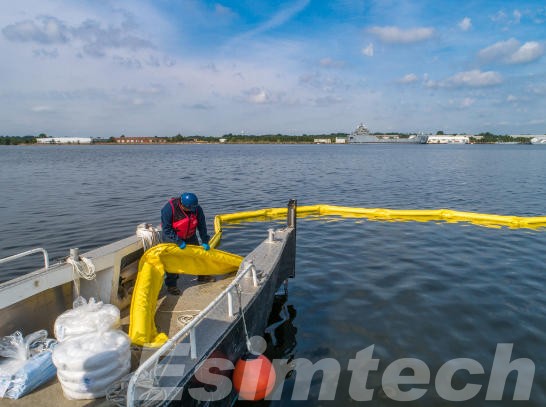
6. Shoreline and Habitat Restoration
Once the cleanup is finalized, repairing damaged ecosystems is the next step. For shoreline restoration, the process includes the removal of contaminated sediments, replanting of vegetation, and stabilizing of eroded shores. Wildlife rehabilitation centers assist sick or injured seabirds, turtles, and marine mammals and release them back to the wild. There are programs that assess the recovery of biodiversity and the condition of the habitats. To promote the recovery of natural resilience of ecosystems to future oil spills, there are programs to plant mangroves and build artificial reefs.
7. Waste Management and Safe Disposal
Cleanup operations generate waste that also needs to be managed to mitigate the effects of an oil spill. Waste includes collected oil, contaminated water, and debris, which all need to be separated, stored, and disposed of in an environmentally responsible manner. Standard disposal methods include thermal treatment, recycling, and incineration. Effective waste management is essential to avoid secondary pollution and assist in the sustainable recovery of the oil spill. Maintaining waste disposal within the removal operations is also necessary to ensure that the recovery is environmentally sustainable.
8. Long-Term Environmental Monitoring
Monitoring activities are key for assessing recovery for any oil spill as it can have long-lasting effects. Environmental scientists repeatedly assess the quality of water, sediments, and the affected area’s biota. These assessments provide long-term data which inform the evaluation of restoration effectiveness and the need for further restoration. Long-term studies help to document the effects of restoration on ecosystem resilience, allowing for improved spill response planning and restoration activities.
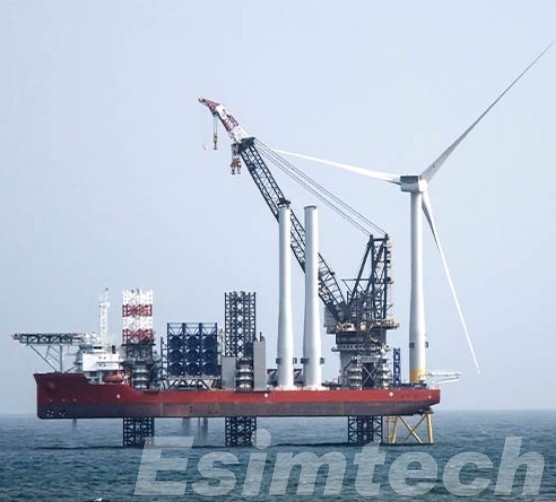
Technological Advancements in Oil Spill Response
Rapid advancements in technology are allowing for the swift and more eco-friendly mitigation of oil spills. Improvements are permitting spill management to shift from responding to proactive approaches whereby oil spills are predicted and managed using real-time data.
- Advanced Detection and Monitoring Technologies
The importance of oil spill early detection can never be overstated, and the progress in remote sensing and other monitoring technologies have made early detection significantly more possible. Oil spills are identified and their size and extent tracked over large ocean areas using high-resolution satellite imagery. Aerial drone surveillance, which offers real-time monitoring and decision support, gathers and transmits lower-altitude detailed visuals for more on-the-ground assessments.
Infrared and ultraviolet sensors can differentiate oil and water and detect thin oil films that are invisible to the naked eye. Additionally, SAR systems can effectively monitor oil spills since they work through and under clouds and can be used during the day and night. This ensures spills can be consistently monitored, regardless of the weather. These systems together provide valuable data on spill dynamics, enabling the rapid coordination of response efforts.
- Smart Containment and Recovery Equipment
Automated systems and smart technology have provided innovations to improve the automation of traditional mechanical oil recovery systems, like skimmers and booms. For example, autonomous booms can use GPS and sensors to monitor and adjust containment strategies that ‘track’ ocean currents and waves to provide ‘active’ containment systems.
Patterns of automation in oil skimmers are also advanced to adopt control systems that improve oil recovery while reducing the intake of water. Some skimmers incorporate advanced materials on their surfaces to recover oil more efficiently. USVs and ROVs improve the safety and speed of recovery in hazardous areas.
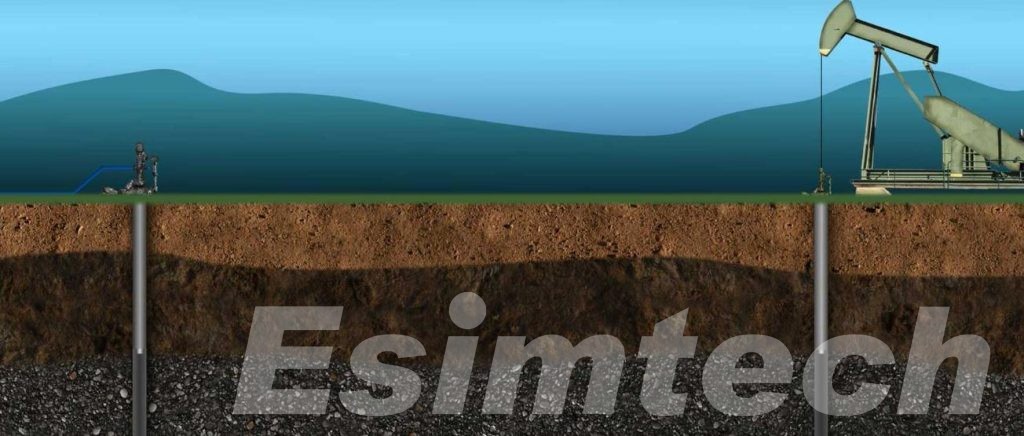
- Use of Robotics and Drones in Cleanup Operations
The integration of unmanned systems and robotics in cleanup operations is transformational. Aerial drones fitted with HD cameras, LiDAR, and infrared imaging systems can rapidly map spill zones and monitor progress at cleanup sites. Underwater drones assess subsurface oil dispersion and can identify hidden oil deposits on the seabed.
For oil spill response and cleanup operations, robotic systems can perform oil spill containment, dispersant application, and sampling routines unattended, thus saving the lives of personnel. During large-scale and offshore incidents, no other resources can match the value of such systems, as they endure extreme and hostile operational theater. These systems are invaluable.
- Innovations in Chemical and Biological Treatment
The development of new bioremediation techniques, in conjunction with the new, environmentally safe dispersant technologies, are some of the true contemporary advancements in minimizing the oil spill cleanup negative impact on the environment. The next-gen dispersants, which are effective in breaking down oil, are made of biodegradable and less toxic constituents safe to marine life.
Oil spill bioremediation is also advanced by the use of custom engineered microbes to degrade oil and other harmful hydrocarbons. The engineered microbes bioremediation method can be designed for a specific oil type and certain geographical and environmental factors, thus greatly speeding the recovery of an area. Coupled with nutrient-rich systems, these tricks are designed to be long-term sustainable solutions to oil pollution.
- Integration of Internet of Things (IoT) Systems
The integration of IoT technologies has revolutionized the level of connectivity in oil spill response activities. Continuous, real-time data on the state of the water, concentration of oil, and progress of the cleanup are provided by networks of interconnected sensors that are deployed on buoys, vessels, and drones. This uninterrupted stream of information aids in the efficient coordination of field personnel and command centers.
The sensors may be linked to response teams’ cloud-based data visualization and remote analysis tools, which facilitates quicker and more effective decision-making. Systems that incorporate the IoT offers equipment responsive to predictive maintenance, so that equipment like pumps and skimmers are maintained in working order prior to and during a response emergency.
- Data-Driven Decision Support Systems
Big data analytics integrated with decision support systems enable the real-time evaluation of multiple response options so that the most effective one is selected in response to changing conditions. These systems incorporate disparate meteorological, hydrodynamic, and operational data, and they assist in resource allocation, the identification of high-risk zones, and in coordinating spill response efforts that are international in nature and crossing borders.
- Future Directions and Sustainable Innovations
The future of oil spill response technology aims toward further automation, enhanced eco-friendliness, and robust predictive capabilities. Innovative absorption technology, developed as part of ongoing nanotechnology research, promises to capture oil with remarkable efficiency and be recycled for future use. Furthermore, fully automated detection-cleanup systems in hybrid AI, IoT, and robotic constructions will vastly diminish human involvement and response time.
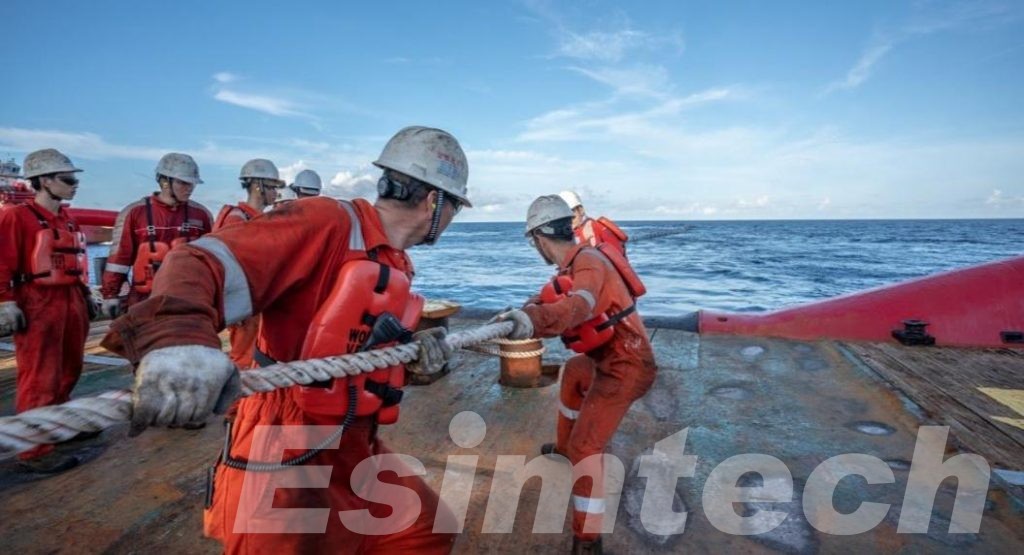
Effective Preparedness and Response Planning for Oil Spills
Preparedness forms the foundation of successful oil spill management. This involves anticipating risks, evaluating key areas that are at risk, and then deciding and documenting the steps for immediate response should a spill occur. This also involves detailed contingency planning, the standby maintenance of response equipment, and, most importantly, training response personnel to be ready and to respond immediately in the event of a spill. This advance work will reduce the time, and consequently the damage, caused by an oil spill, between the detection of the spill and the commencement of mitigation activities.
A well-prepared organization will identify potential oil spill sources, whether offshore rigs, oil pipelines, or tankers, and identify key protected areas that may suffer such as coral reefs, fisheries, or coastlines, and prioritize them for protection. Under constant risk evaluation and proactive management, preparedness assures that response efforts are more preventive than reactive.
- Developing an Effective Oil Spill Response Plan
A successful oil response plan provides a structured framework for handling an oil spill efficiently from the moment it occurs until full recovery.
Here’s a detailed chart describing key elements of an effective oil spill response plan
| Element | Description | Purpose | Example of Application |
| Clear Command Structure | Establishes a unified chain of command and roles for all response teams and agencies. | Ensures efficient coordination, communication, and accountability during emergencies. | Implementing the Incident Command System (ICS) for multi-agency coordination. |
| Risk Assessment and Scenario Planning | Identifies potential spill sources, high-risk areas, and environmental sensitivities. | Helps prioritize protection zones and allocate resources effectively. | Mapping coastal ecosystems and shipping routes prone to oil spills. |
| Resource Inventory and Logistics | Maintains updated lists of available equipment, materials, and trained personnel. | Ensures quick mobilization of containment and recovery resources. | Stockpiling booms, skimmers, dispersants, and personal protective gear. |
| Communication and Information Flow | Defines communication protocols for field teams, control centers, and stakeholders. | Facilitates real-time data sharing and coordinated decision-making. | Using satellite communication and digital dashboards for live updates. |
| Containment and Recovery Procedures | Outlines step-by-step actions for spill containment, collection, and cleanup. | Reduces the spread of oil and minimizes environmental damage. | Deploying booms and skimmers immediately after spill detection. |
| Safety and Health Measures | Establishes guidelines for responder safety, hazard assessment, and protective equipment use. | Prevents injuries and ensures safe working conditions during operations. | Conducting air-quality monitoring and enforcing PPE compliance. |
| Environmental Protection Strategies | Identifies sensitive habitats and specifies measures to protect wildlife and ecosystems. | Minimizes long-term ecological damage. | Prioritizing protection of coral reefs and fish breeding areas. |
- Training, Drills, and Capacity Building
Response plans are only as strong as the people who execute them. That is why having training and drills done regularly are critical for building the skills and inter-team coordination for real emergencies. These training drills provide an opportunity for different agencies to work together by practicing containment procedures, and for practicing crisis communication and pressured decision-making drills. This training fosters inter-agency teamwork which results in a faster and more coordinated on-ground response in real-world situations.
The training also comprises theoretical components which provide instruction about spill dynamics, safety, and environmental assessments which include a hands-on approach as well. This balanced training strategy ensures responders will always be able to adapt to unpredictable field situations while ensuring safety and operational efficiency are maintained.
- The Role of Simulation Technologies in Preparedness
Oil and gas simulation technologies have become a transformative element of spill preparedness and response planning.
| Aspect | Description | Purpose | Examples of Application |
| Predictive Modeling | Uses computational models to simulate oil movement and dispersion under various weather, current, and temperature conditions. | Helps forecast oil spread patterns for faster containment and resource allocation. | Modeling oil drift using ocean current and wind data for coastal protection planning. |
| Scenario Simulation | Creates virtual spill events to simulate the emergency response strategies and decision-making. | Allows responders to practice different response scenarios without real environmental impact. | Running simulated offshore spill exercises to evaluate emergency readiness. |
| Virtual Reality (VR) Training | Immersive, realistic 3D training environments for responders to experience real-life spill situations. | Enhances training engagement, quick decision-making, and coordination under pressure. | VR-based training for boom deployment or hazardous environment navigation. |
| Augmented Reality (AR) Assistance | Integrates digital information over real-world visuals to guide responders during field operations. | Improves on-site efficiency by providing step-by-step visual support for containment and cleanup. | AR-guided instructions for using skimmers and dispersants effectively. |
| Digital Twin Technology | Virtual replicas of facilities or environments (offshore platforms, ports, coastlines) to simulate potential spills and response actions. | Enables proactive risk analysis and optimization of response plans before incidents occur. | Simulating a pipeline rupture scenario to test containment efficiency. |
| Data Analytics and AI Integration | Combines historical spill data, environmental variables, and AI algorithms to optimize decision-making. | Enhances predictive accuracy, allowing for smarter resource deployment and prevention strategies. | AI-based spill trajectory prediction and automatic alert systems. |
| Post-Event Analysis Tools | Simulates and analyzes previous spill responses to identify strengths and weaknesses. | Supports continuous improvement in preparedness and planning. | Reviewing simulated response outcomes to refine emergency procedures. |
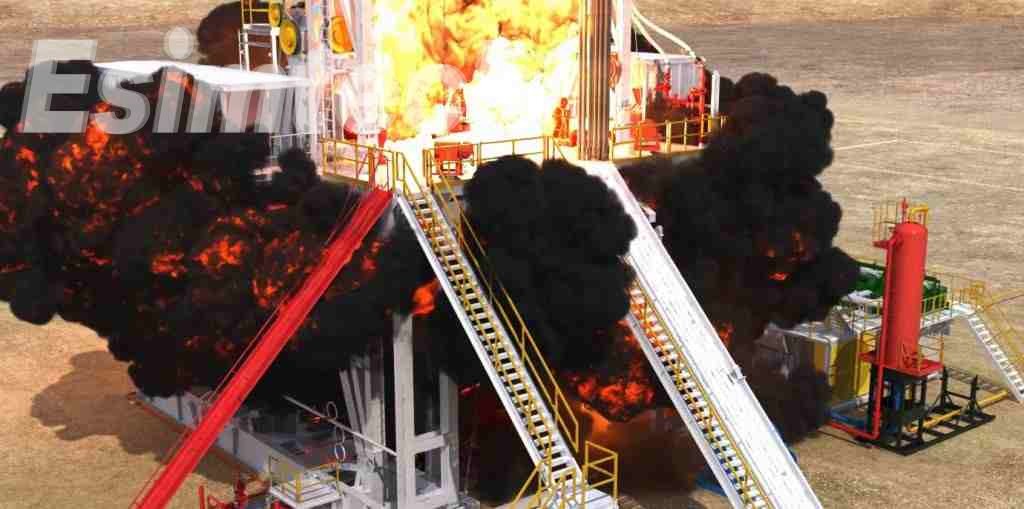
- Continuous Evaluation and Improvement
Preparedness and response planning are two things which should never be static. After an actual spill event or during practice drills, organizations, in a systematic approach, evaluate the effectiveness of the various actions taken which helps in planning the next response for the next event. Lessons learned lead to refinements of contingency plans which include updates to response plans, equipment standards, and coordination protocols. Improved response plans allow systems to adapt to new technologies while also addressing evolving environmental response challenges. This positive feedback loop enhances the response system while also building an organizational safety culture that values environmental protection from the everyday and prioritizes readiness.
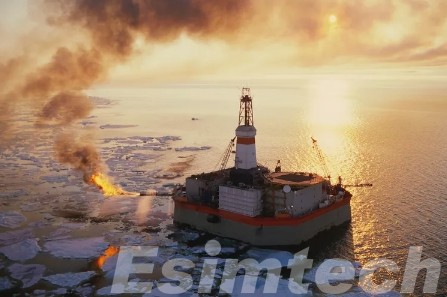
- Engaging Communities and Stakeholders
Involvement of the community is becoming evidently more vital with each passing day concerning the preparedness for oil spills. Local community members, fishermen, and businesses along the coast are typically the first people to witness spill incidents. Organizations can make their operations more responsive and broaden their reach by including these people in efforts pertaining to preparedness, including awareness programs, reporting systems, and emergency response training. Collaborating with local community members guarantees that their response plans are practical and take into account the unique needs of the area.
Summary
In order to effectively respond to and mitigate the impacts of oil spills, one must contend with the dichotomy of immediate response and the extensive time required for the ecosystem to recover. Embracing new technologies, refining contingency plans, and fostering international cooperation will lessen the environmental and economic impacts of oil spills. The oil spill management of the future will remain innovative and will emphasize preparedness as the critical components.
